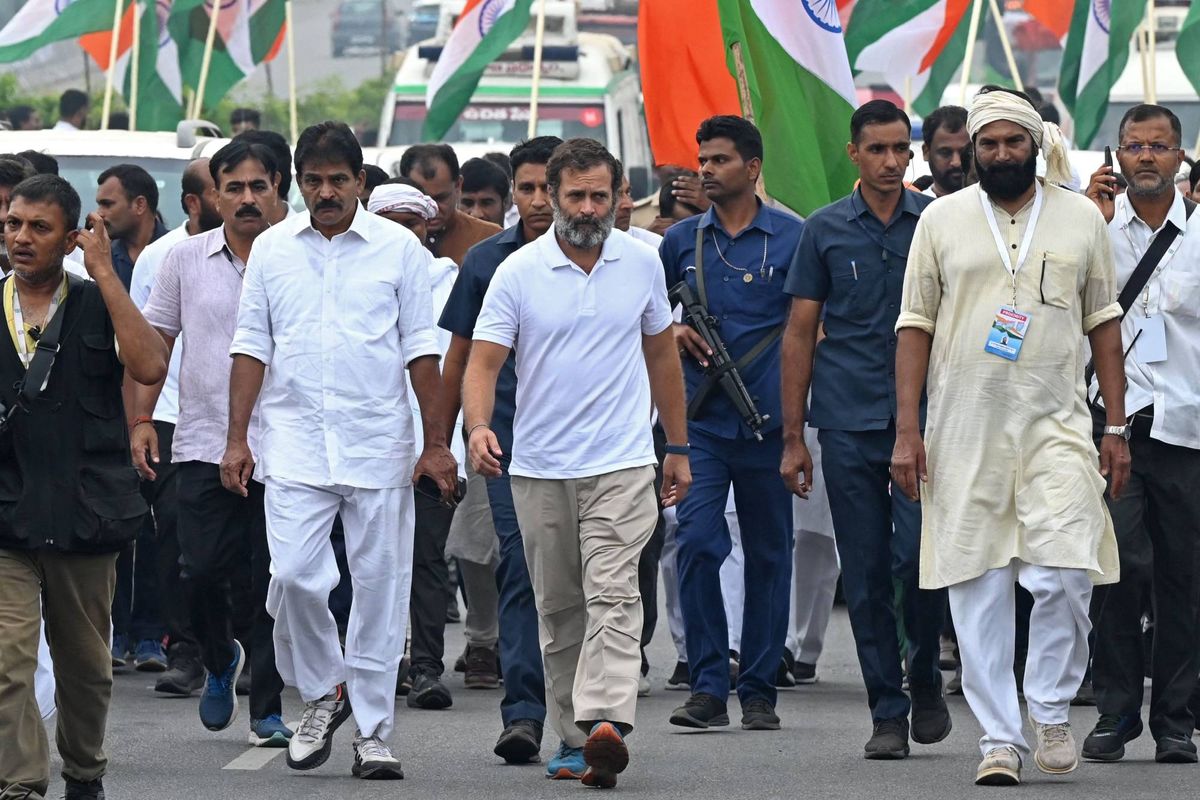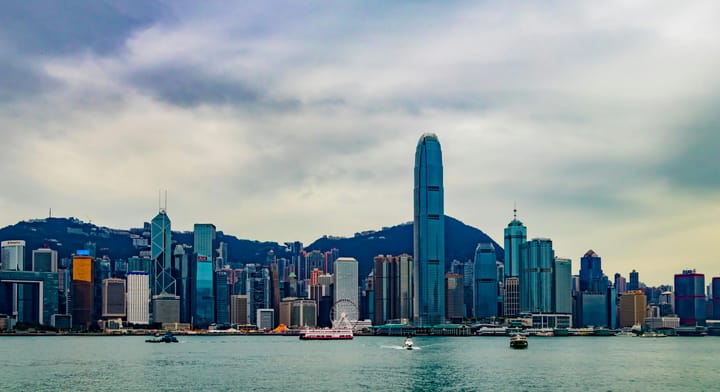India’s 2,200 mile opposition march across the country
The tides could be turning for the country’s rising divide.

A few minutes every morning is all you need.
Stay up to date on the world's Headlines and Human Stories. It's fun, it's factual, it's fluff-free.
We’re nearing the 75th anniversary of Mahatma Gandhi’s assassination. In January 1948, he was shot by a religious zealot, Nathuram Godse, who opposed Gandhi’s friendliness towards India’s Muslim community.
Now, Tushar Gandhi, Mahatma’s great-grandson, says that Godse’s attitudes have become a little more common in India. “That whole philosophy has now captured India and Indian hearts, the ideology of hate, polarisation, divisions,” he told AFP news agency. And Tushar attributes these ideas to the rise of Prime Minister Narendra Modi and his Hindu nationalist Bharatiya Janata Party (BJP) to power over the past few years.
The divisive Modi took office in 2014. His government, the Bharatiya Janata Party (BJP), and another far-right Hindu group have warned Hindus against religious conversions to Islam and Christianity and called to prevent a “demographic imbalance.” Since he came to power, there have been increased hate attacks on the Indian Muslim community.
But, the tides could be turning for the country’s rising divide.
With the 2024 election coming up, Rahul Gandhi (no genetic relation to Mahatma), a former leader of India’s Congress Party, has been leading a 2,200 miles (3,500 kilometers) pilgrimage across the country. It started in Kanyakumari in Tamil Nadu and is finishing up in the Himalayas. This trek is reminiscent of Mahatma’s own walk in 1930 when he demonstrated in protest of British taxes and rule in India.
He told supporters joining him, “We started this march to bring people together.”
But will this demonstration change anything?
Even though the Congress Party held power in India for most of its 75 years of independence, its popularity dropped in the past few decades. This march is a test to see if the opposition movement actually has enough clout to pose a threat against Modi and the BJP. Rahul is stopping in even small, remote villages to drum up support from the masses.
But, it looks like Rahul’s march “doesn’t have the capacity to translate the crowd into votes,” said Sanjay Kumar, a professor at the Centre for the Study of Developing Societies in New Delhi. “Nowadays nationalism is a very big issue on which people vote.”
But polls suggest the march is helping Ghandi’s image. Now, officials are considering whether he should lead another march and a door-to-door campaign before the election.




Comments ()